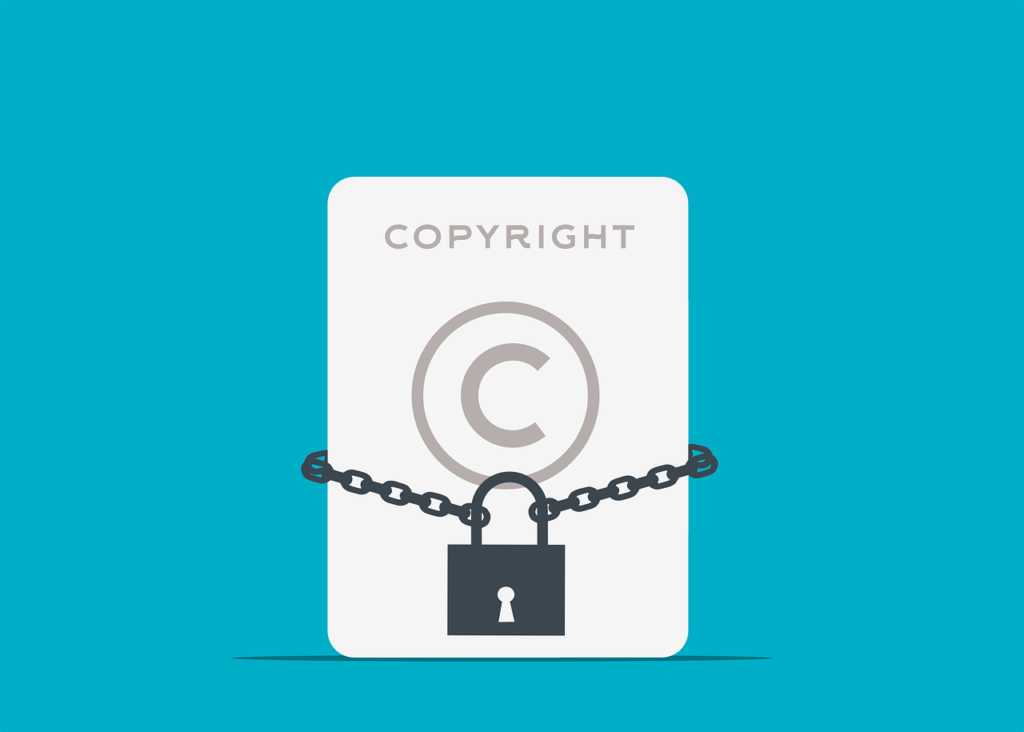Product Development Strategy
Got a great idea for a product? Making it a reality takes some savvy planning. Crafting a solid strategy can be the secret sauce to whipping up a product that not only hits the shelves but also gives your competitors a run for their money. It’s about aligning your light-bulb moments with the bigger picture and business goals.
Why Product Development Matters
Putting time and money into product development is like having a survival kit for the business jungle. It helps you keep up with what folks want today and gives you the edge to dream up tomorrow’s must-haves. This is your playbook for pulling together everything—and everyone—you need to get things moving, from your marketing whizzes to your engineering gurus.
By getting your ducks in a row with product development, things just run smoother. You’ll hit the ground running, beating the clock, and upping your chances of hitting that sweet spot on launch day. A well-oiled framework means your plan and actions sing from the same hymn sheet, mixing creativity with cunning strategy. Curious for more? Check out our piece on the product development life cycle.
Six Stages of Development
Turning a twinkle of an idea into a must-have product usually follows a six-step routine. This lineup ensures all the right voices chime in from start to finish, making it a team victory. Here’s the play-by-play:
| Stage Number | Stage Name | Description |
|---|---|---|
| 1 | Idea Generation (Ideation) | The kickoff with thinking caps on for fresh, new ideas. |
| 2 | Product Definition | Zeroing in on what the product is about, who wants it, and why they need it. |
| 3 | Prototyping | Whipping up a rough version to see how it holds up and works. |
| 4 | Initial Design | Fine-tuning the details, building on the feedback from your prototype. |
| 5 | Validation and Testing | Making sure everything works like it should before showtime. |
| 6 | Commercialization | Rolling it out to the world, complete with a game plan for getting it noticed. |
This method gets your team moving together, blending smarts with creativity just right (Asana). Stick to these steps and watch your ideas bloom with less hiccups. For more tips on mastering product development, swing by our article on new product development strategies.
Product Development Team
Making a product isn’t just about having a great idea – it’s all about having the right folks on board to see it come to life. Knowing who does what can make a world of difference for any bigwig like a CEO or marketing guru.
The Team Players
Your crew in product development is stacked with all-stars, each bringing their own skill set to the table. The key players include:
| Role | What They Do |
|---|---|
| Product Management | Charts the course with a vision and a plan, and steers the product through its journey. |
| Project Management | Keeps the show running on time and on budget, wrangling everyone into shape. |
| Design | Makes it pretty and practical, whipping up sketches and user-friendly interfaces. |
| Development | The builders, turning those designs into the real deal. |
| Marketing | Sets up the spotlight, building campaigns to hype up the launch. |
| Sales | The ears on the ground, picking up customer vibes that tweak product and pitch. |
| Senior Management | The top brass calling the shots on where the cash and resources go. |
These folks need to work like a rock band – totally in sync – to hit the high notes during a product launch. For more on this tune, check out our product development life cycle guide.
What They Do in the Product’s Life
Everybody has a part to play at different times along the product’s journey. From scribbling down ideas to making sure the product is rocking after release, here’s how the team chips in at every phase:
| Stage | Key Players | What They Bring |
|---|---|---|
| Brainstorming | Product Managers, Marketing | Spotting opportunities and tossing around cool ideas. |
| Concept Cooking | Designers, Product Managers | Drawing up early sketches and specs. |
| Prototype Creation | Designers, Developers | Crafting test versions to see if it all holds water. |
| Testing Times | Developers, Project Managers, Marketing | Gathering user thoughts on the mock-ups for tweaks. |
| Showtime | Sales, Marketing, Senior Management | Rolling out the launch plan, making sure everyone’s on the same page. |
| Ongoing Support | Sales, Marketing | Keeping tabs on customer feedback to keep upping the game. |
Being clued-up on these roles means smoother sailing and tighter teamwork, paving the way for a straight shot from idea to reality. Peek into more strategies with our new product development strategies resource.
Factors Influencing Success
Understanding why stuff works—or doesn’t—is crucial when developing your next big thing. Without a game plan, you might find out the hard way why things flop.
Common Reasons for Failure
Getting a product from idea to unstoppable sensation is like walking a tightrope without a net. Harvard Business School says about 95% of new products belly-flop every year. Here’s why so many would-be hits, well, aren’t:
| What Could Go Wrong | What’s the Damage? |
|---|---|
| Skipping Preparation | Some folks rush into making things, leaving all that marketing jazz as an afterthought. Result? Crickets. Crayon Competitive Intelligence Blog. |
| Audience Who? | Not knowing who’s gonna buy your stuff makes it impossible to actually sell it. |
| Weak Value Proposition | You gotta meet people’s needs head-on, not fiddle around with features nobody cares about. |
| Bogus KPIs | Without clear markers to gauge what’s working, you’re practically steering blind. |
Getting wise to these pitfalls helps you dodge ‘em when it’s time for your launch.
Clear Product Strategy
Having a rock-solid plan is key—like a GPS for your product’s road to glory. You’ll need to set actual goals that cover stuff like cash, pricing, how much you’ll sell, and knowing who’s coughing up for repeat buys versus new folks.
Here’s a bit of what you might shoot for:
| Goal Type | Actual Targets |
|---|---|
| Make Money | Hit $500,000 in your first year. |
| Price Smart | Tag it at $29.99. |
| Sales Numbers | Crack 10,000 units out the gate. |
| Boost Conversions | Up conversion rates by 15%. |
Rolling with a clear strategy not only paves a way through the chaos but sets you up to thrash the market mess. Start with a firm plan and you’ll find the bumps won’t trip you up so much. Curious how to up your game? Check out new product development strategies or dive deeper into product development analysis for more wisdom.
Prototype Testing
Let’s talk about prototype testing—it’s a game-changer in the world of product creation. Getting a grip on why it’s so important can turn your project’s progress from guesswork into a well-oiled machine.
Importance of Prototyping
Prototype testing is like having eyes on the back of your head for spotting design goofs and hiccups before they turn into costly nightmares. By putting prototypes in the hands of real folks, you’re not just ticking boxes. You’re shaping a product that fits users like a glove (Maze)
Here’s what’s in it for you with prototype testing:
| Benefit | What’s in it for you? |
|---|---|
| Sniff Out Design Read bloopers | Find the bugs before they bug you in the final version. |
| Get Users Talking | Hear straight from the horse’s mouth about what works and what doesn’t. |
| Save Time and Dough | Fix the screw-ups early to skip the post-launch scramble. |
| Confirm You’re on Track | Double-check that your ideas hit the nail on the head before going all in. |
| rally the Troops | Show those in charge the proof in the pudding with your tried-and-true models. |
Prototype tests fit in anywhere during your product’s journey. It’s all about making sure you’re still cruising in the right direction (Maze). This means you can keep tweaking your product until it feels just right.
Role in Product Success
Prototype testing’s number one job is making sure you don’t miss the mark. It dishes out insights that help you know what users really want—before you’ve even begun the heavy lifting (Maze).
You’ve got options—like using nearly finished mock-ups to get a good feel for the user journey. Or, if you’re in the brainstorming phase, simple sketches can let you play around with ideas without the pressure (Voltage Control).
Use prototype testing to make stuff that users actually need, beef up how much your customers love you, and conquer the market. Want to get even better at this? Check out more tips on product development analysis, product design and development, and customer-centric product development.
New Product Development (NPD)
Defining NPD
New Product Development (NPD) is all about creating and launching new items that hit the market like a breath of fresh air. It’s the adventure of taking a bright idea through a maze of design, engineering, and research until it blossoms into a market-ready product. Simply put, NPD makes sure that dreams are not only born but also nurtured into tangible products that folks can actually buy (Maze).
Types of NPD
Knowing the different flavors of new product development (NPD) can help you whip up plans that satisfy what people want. Here’s a taste of the main categories:
| Type of NPD | Description |
|---|---|
| New-to-the-world products | These are the head-turners, products that have never seen the light of day before. They’re the game-changers, potentially shaking up how things are done out there. |
| New-to-the-firm products | These are your existing products, but they’re venturing into new lands or meeting different folks. They might not be fresh on the global stage, but they’re new to your company and customers. |
| Additions to existing product lines | Think of these as an upgrade—a spice level for your curry to suit every taste. They bring in new versions or features to tempt existing fans and reel in fresh faces. |
Getting these categories right is like having the perfect recipe for your NPD strategy (Maze). Understanding these types means you can wisely dish out your resources, boost your lineup of offerings, and pump up your business mojo.
When you’re deep into your product development analysis, you’ll want to figure out which NPD type best matches what you’re trying to achieve and what your customers crave. This will help you cook up innovative solutions that fill gaps in the market and set your growth on a roll.
NPD Process Stages
Getting your head around the New Product Development (NPD) process? It’s step numero uno for making sure your next big thing doesn’t flop in the marketplace. There are seven stages to this process, and you’ll want to know them well. They’ll help you keep things on track, cut down on those nasty surprises, and help make some good ol’ profits.
Seven Development Steps
Idea Generation: This is where the magic happens—think open discussions, wild ideas, and creative sparks. You want to toss every wild idea into the hat right here. Go nuts!
Idea Screening: Now, not everything that shines is gold. Sift through your ideas and toss what won’t work. Consider what matches your business vision.
Concept Development and Testing: Picked the promising ideas? Awesome! Shape them into concepts and see what your future customers think. It’s like taste-testing with ideas.
Marketing Strategy and Business Analysis: Time to get serious—plan how you’ll sell this thing. Figure out your key messages and how you’ll compete.
Product Development: Alright, let’s build it. Jump into designing and forming the actual product. Prototype it, test it, repeat. You want it right before anyone sees it.
Test Marketing: Let a small crowd give it a whirl. Their reactions could be the difference between a launch party or a lemon.
Product Launch: To the moon, baby! Release it with a bang using a smart plan. Keep eyeballs on your product and hearts racing.
| Development Step | Description |
|---|---|
| 1. Idea Generation | Toss ideas around for new product possibilities |
| 2. Idea Screening | Sort the practical ones from the pie-in-the-sky crazy |
| 3. Concept Development and Testing | Polish those concepts with feedback from the people who’ll buy ’em |
| 4. Marketing Strategy and Business Analysis | Plan your marketing moves and how you’ll measure success |
| 5. Product Development | Get your hands dirty creating and designing |
| 6. Test Marketing | A sneak peek for a limited few to gauge their reactions |
| 7. Product Launch | Roll it out in style and grab attention! |
Ensuring Product Success
Want your product to knock it out of the park? Start by setting solid goals that are clear, doable, and you can actually measure. Think about things like how much dough you want to rake in, the right price tag, and how many units you plan on moving. Harvard Business School throws a sobering stat at you—95% of the 30,000 new products annually go up in smoke. Ouch! (Crayon Competitive Intelligence Blog).
Don’t skimp on collecting what your future buyers think. Dive deep into market trends and leverage that info during the product development process. Listen, tweak, and fine-tune your product so it speaks to them. This strategy will tilt the odds in your favor.
Want more hot tips on crafting a killer product plan? Dig into our guides on product development strategies and product design and development.
Customer Feedback in Development
Listening to your customers isn’t just nice-to-do, it’s your ace in the hole for crafting a product folks actually want. Their insights can be the secret sauce to shaping a winner that’s both loved by users and a market hit.
Role of Customer Input
Customers are the ones using (or not using) what you create, so their input is like gold, especially when you’re figuring out if your idea fits their lives. Their thoughts tell you if your product makes sense or if you need a serious rethink to hit the mark. Think of feedback as a compass that keeps your product heading true north, design-wise and market-wise.
When you’re sorting out what features to prioritize during planning, feedback’s like your backstage pass to what really matters. It helps keep you from veering off into unnecessary side quests, saving time and sanity. Handy tools like Rapidr make gathering those golden nuggets of feedback smoother, making sure you’re spot-on with design, pricing, and what you’re putting out there.
Using Feedback for Improvement
Tapping into customer chatter can be your secret weapon for fine-tuning everything from marketing pitches to sales tactics. Getting your story straight means potential buyers are more likely to listen, and that’s where growth happens. Endless feedback isn’t just a chore; it’s fuel for creating campaigns that bring the dollars in.
Keep those communication lines wide open with beta tests, sneak previews, or feedback forums. It’s like having a crystal ball for spotting where you need to tweak, ensuring your product keeps pace with what folks want.
For more tips and tricks on nailing your product strategy, check out our guides on the product development lifecycle and crafting customer-centric products.
Product Launch Metrics
When you’re introducing something new, measuring how well it’s accepted is vital. Keeping track of product launch metrics is your secret weapon for checking how your team is doing during and after the big reveal.
Key Performance Indicators
Think of these indicators as the report card for your product’s debut. Key performance indicators (KPIs) show you how things are going in terms of getting the word out, engaging folks, and just nailing the whole plan. Here’s what to keep an eye on:
| Metric | Description |
|---|---|
| Lead Generation | Count of potential customers you’ve captured before and during the launch. |
| Conversion Rate | The percentage of those leads becoming actual customers. |
| Email Open Rate | How many folks are bothering to peek at your emails. |
| Click-Through Rate (CTR) | People clicking links in your emails—it’s all about engagement. |
| Tracking Costs | The money spent on making your product visible. |
| Product Trials | Number of folks giving your product a whirl during that trial phase. |
Don’t stop once the product’s out—keep tabs after the launch too. Here’s what to watch:
| Metric | Description |
|---|---|
| Customer Retention Rate | How many users stick around for the long haul. |
| Referrals | New faces joining through recommendations. |
| Revenue | Total money coming in from the product. |
| Net Promoter Score (NPS) | How eager your customers are to sing your praises (Viral Loops). |
Each of these measures tells a part of the story about your launch’s success.
Tracking Success Factors
Keeping an eye on these factors helps keep your product on track, keeping customers happy and your creation shining. Here’s what matters:
- Customer Retention Rate: It’s all about how many users are hanging in there with your product over time. High numbers here is a good sign.
- Net Promoter Score (NPS): Measure your customer love through their willingness to spread the good word (Viral Loops).
- Customer Support Ticket Volumes: The volume of support requests gives you a side-eye view of the issues customers might face (LinkedIn).
Understanding these numbers helps you steer the ship and make decisions based on real, solid data. By keeping these checks in place, you’re more likely to land your product smoothly in the market. Hungry for more? Sneak a peek at our tips on new product development strategies and product development best practices.
Finding Your Niche
Hunting down market opportunities is a game-changer for building kick-butt products. If you’re steering the ship as a CEO, business owner, or marketing honcho, you gotta get your head around who’s buying and check out the rivals doing their thing.
Who’s Your Audience?
Figuring out who buys your stuff isn’t rocket science, but it’s a biggie. People buy things based on who they are, where they hang out, and why they buy stuff. By slicing and dicing your customer base, you’re in a better spot to guess how many folks might love what you’re selling. Dive deeper into what makes folks tick, so your marketing hits home (Euromonitor).
| Type of Group | What it Means | Who’s in it? |
|---|---|---|
| Demographic | Who they are: age, sex, bucks, learning level | College kids, single moms, retirees |
| Geographic | Where they are: city slickers, farmers, global hobos | City folk vs. villagers, different countries |
| Behavioral | Why they buy: habits, brand love | Newbies, switchers, brand faithful |
Getting a bead on these groups means you can tweak what you’re selling to make it super attractive to just the right folks.
Eye on the Competition
Understanding what your competition is up to is just as essential. Checking out competitors lets you in on how the big shots push their products. This spy work gives you the inside scoop on smart moves for capturing the market (Euromonitor).
In your snooping, keep an eye on:
| What to Check | What to Look For |
|---|---|
| Positioning | What’s their spiel? |
| Pricing | How do they price stuff? |
| Audience | Who’s their pitch for? |
| Distribution | Where do they dish out their goodies? |
| Features | What’s cool about their stuff? |
Once you get the lowdown on what others are doing, you can map out a slick path for your product development roadmap, making sure you’re ahead of the curve. This savvy approach helps in dreaming up cool stuff that clicks with your crowd and rides the new waves in the market.
Grabbing chances in your audience groups and knowing your competition gives you the blueprint for hitting product gold. Keep these tactics handy to beef up your product plan. For the whole shebang on leveling up your strategy, check out our reads on product design and development and new product development strategies.




















